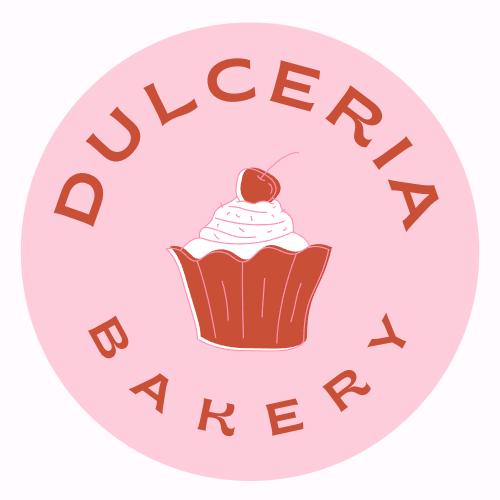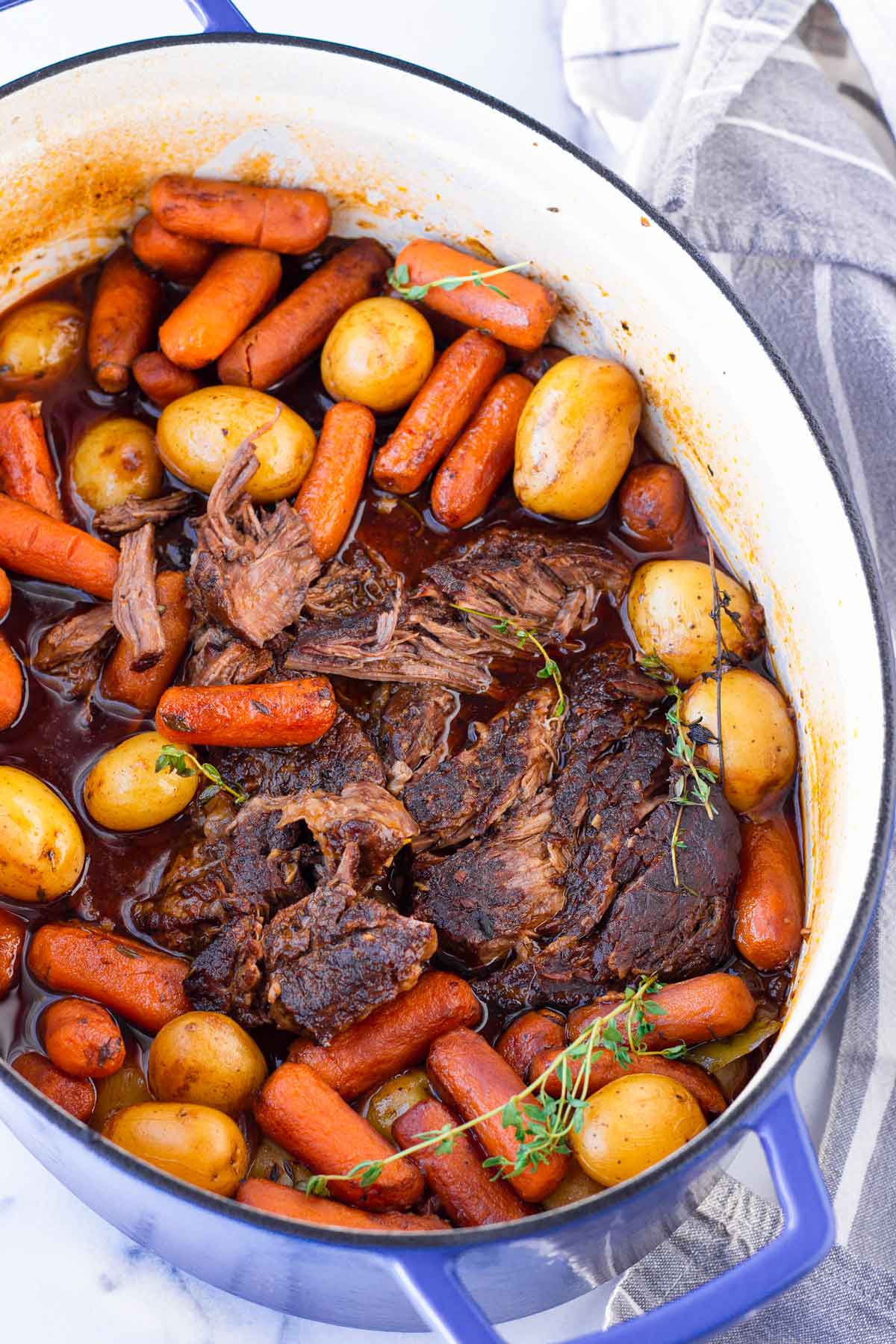A Dutch oven is a versatile kitchen tool that can be used for a variety of cooking methods, including roasting. Roasting is a cooking technique that involves cooking food, usually meat or vegetables, at a high temperature for an extended period of time. The result is a delicious, flavorful dish that is perfect for special occasions or family dinners.
Using a Dutch oven for roasting can help ensure that the food is cooked evenly and retains its moisture, resulting in a tender and succulent meal. In this way, a Dutch oven is a great tool for any home cook looking to create delicious and flavorful roasts.
What is the best Dutch oven for roast?
When choosing a Dutch oven for roasting, there are a few key features to consider:
- Size: The Dutch oven should be large enough to accommodate the roast with room to spare. A good rule of thumb is to choose a Dutch oven that is at least 2-3 inches wider and deeper than the roast.
- Material: A Dutch oven made of heavy-duty cast iron is ideal for roasting as it will distribute heat evenly and retain heat well. However, enameled cast iron and stainless steel Dutch ovens can also be used for roasting.
- Lid: The Dutch oven should come with a tight-fitting lid to trap in moisture and flavor while roasting.
Based on these features, some of the best Dutch ovens for roasting include:
- Le Creuset Signature Enameled Cast Iron Dutch Oven: This Dutch oven is made of high-quality enameled cast iron and comes in a variety of sizes. It has a tight-fitting lid and excellent heat distribution, making it ideal for roasting.
- Lodge Cast Iron Dutch Oven: Lodge is a trusted brand for cast iron cookware, and their Dutch oven is no exception. It is made of durable cast iron and comes in a range of sizes. It also has a self-basting lid to keep the roast moist and flavorful.
- All-Clad Stainless Steel Dutch Oven: If you prefer a stainless steel Dutch oven, the All-Clad version is a great choice. It is made of high-quality stainless steel and has a large capacity. The lid fits tightly to lock in moisture and flavor.
Ultimately, the best Dutch oven for roasting will depend on your personal preferences and needs.
Is a Dutch oven good for roast?
Yes, a Dutch oven is an excellent tool for roasting. The heavy, thick walls of a Dutch oven allow for even heat distribution, which is essential for roasting. The lid of the Dutch oven also helps to trap moisture and flavor, which helps to keep the roast tender and juicy.
When roasting in a Dutch oven, you can sear the meat first on the stovetop, then transfer it to the oven to finish cooking. This searing process creates a flavorful crust on the meat and seals in the juices. The Dutch oven also allows you to cook the roast slowly and gently, which helps to develop deep flavors and tenderize the meat.
Overall, a Dutch oven is a great tool for roasting, and it can help you create a delicious and flavorful roast with minimal effort.
What size Dutch oven is best for a roast?
When choosing the size of the Dutch oven for roasting, you want to ensure that the Dutch oven is large enough to accommodate the roast with some room to spare. This will allow the heat to circulate around the roast evenly and help to prevent overcrowding, which can lead to uneven cooking.
A general rule of thumb is to choose a Dutch oven that is at least 2-3 inches wider and deeper than the roast. For example, a 5-6 quart Dutch oven is usually suitable for roasting a 3-4 pound roast. If you are cooking a larger roast, you may want to consider a larger Dutch oven.
It’s also important to consider the shape of the Dutch oven. A round Dutch oven is great for roasting round cuts of meat, such as a beef roast or a pork tenderloin. However, if you’re roasting a larger cut of meat, such as a whole turkey or a ham, a larger oval-shaped Dutch oven may be more suitable.
Ultimately, the size of the Dutch oven you choose will depend on the size of the roast you’re cooking and your personal preferences.
Should I get a shallow or deep Dutch oven for roast?
When choosing a Dutch oven for roasting, both shallow and deep options can work well, depending on your personal preference and the size of the roast you’re cooking.
A shallow Dutch oven can be ideal for roasting smaller cuts of meat, such as a chicken or a pork loin, as it provides plenty of surface area for browning and caramelization. Additionally, a shallow Dutch oven will allow the meat to cook more quickly and evenly due to its wider surface area.
On the other hand, a deep Dutch oven may be more suitable for larger cuts of meat, such as a beef brisket or a whole turkey, as it can accommodate the size of the roast more easily. The depth of the Dutch oven will also help to keep the moisture and flavor of the meat locked in, resulting in a tender and succulent roast.
Ultimately, the size and shape of the Dutch oven you choose will depend on the size of the roast you’re cooking and your personal preferences. Both shallow and deep Dutch ovens can work well for roasting, so it’s important to choose one that suits your needs and preferences.
What is the best Dutch oven thickness for roasts?
When it comes to the thickness of a Dutch oven for roasting, it’s best to choose one that is thick and heavy. A thicker Dutch oven will retain heat more effectively, which helps to create a more even cooking environment and results in a more evenly cooked roast.
The ideal thickness for a Dutch oven for roasting is generally between 3-5mm. This thickness provides a good balance between heat retention and weight, making it easy to handle and maneuver when cooking.
It’s important to note that the thickness of the Dutch oven is just one factor to consider when choosing one for roasting. Other factors such as size, shape, and material should also be taken into account to ensure that you choose the best Dutch oven for your roasting needs.
Benefits of using Dutch oven for roast
Using a Dutch oven for roasting can offer several benefits, including:
- Even cooking: The thick walls and heavy lid of a Dutch oven help to distribute heat evenly, resulting in a roast that is cooked thoroughly and evenly throughout.
- Moisture retention: The tight-fitting lid of a Dutch oven helps to trap moisture inside, which can help to keep the roast tender and juicy.
- Versatility: Dutch ovens can be used for a variety of cooking methods, including roasting, braising, and stewing, which makes them a versatile addition to any kitchen.
- Easy cleanup: Dutch ovens are often made of materials such as cast iron or enamel, which are easy to clean and maintain.
- Flavor enhancement: The Dutch oven’s heavy lid and tight seal can help to lock in flavor and aromas, resulting in a more flavorful roast.
Overall, using a Dutch oven for roasting can result in a tender, juicy, and flavorful roast, while also providing a versatile and easy-to-use cooking vessel.
Factors to consider when choosing the best Dutch oven for roast
Here are some factors to consider when choosing the best Dutch oven for roasting:
- Size: Choose a Dutch oven that is large enough to accommodate the size of your roast, as well as any vegetables or other ingredients you plan to include.
- Material: Consider the material of the Dutch oven. Cast iron is a popular choice for roasting as it is durable, retains heat well, and distributes heat evenly. However, enameled cast iron or stainless steel Dutch ovens can also work well.
- Shape: Choose a Dutch oven that has a wide, flat bottom and high sides to accommodate the size and shape of your roast.
- Lid: Look for a Dutch oven with a tight-fitting lid to keep the heat and moisture inside while roasting.
- Handles: Make sure the Dutch oven has sturdy, heat-resistant handles to make it easy to move in and out of the oven.
- Thickness: A thicker Dutch oven will retain heat better and provide more even cooking for your roast.
By considering these factors, you can choose the best Dutch oven for your roasting needs and create delicious and flavorful roasts with ease.
How to use Dutch oven for roast
Here are the general steps for using a Dutch oven for roasting:
- Preheat the oven: Preheat your oven to the temperature indicated in your recipe.
- Prepare the roast: Season your roast as desired with herbs, spices, and salt and pepper. You can also sear the roast in a hot Dutch oven to add additional flavor and texture.
- Add vegetables and liquid: Add vegetables, such as onions, carrots, and potatoes, to the Dutch oven. Pour in a liquid, such as broth, wine, or water, to create steam and add flavor to the roast.
- Place the roast in the Dutch oven: Place the seasoned roast on top of the vegetables in the Dutch oven.
- Cover and roast: Cover the Dutch oven with its lid and place it in the preheated oven. Cook the roast according to your recipe, checking on it periodically to ensure that it is cooking evenly.
- Check for doneness: Use a meat thermometer to check the internal temperature of the roast to determine when it is done cooking. The temperature will vary depending on the type of roast and your desired level of doneness.
- Rest the roast: Once the roast is done, remove it from the Dutch oven and let it rest for a few minutes before carving. This will allow the juices to redistribute and the roast to be more tender.
- Serve: Serve the roast with the vegetables and liquid from the Dutch oven as desired.
By following these steps, you can use your Dutch oven to cook a delicious and tender roast with minimal effort.
How long does it take to use Dutch oven for roast?
The cooking time for a roast in a Dutch oven can vary depending on several factors, such as the size of the roast, the type of meat, and the oven temperature. As a general rule of thumb, a roast cooked in a Dutch oven at 350°F (175°C) will take about 20 minutes per pound to cook to medium doneness. However, it’s always best to refer to a specific recipe or meat thermometer to determine the exact cooking time for your particular roast. Additionally, it’s important to factor in the resting time for the roast after it is removed from the oven, which can be anywhere from 10-20 minutes depending on the size of the roast.
Conclusion
In conclusion, a Dutch oven is an excellent tool for cooking a roast. It provides even heat distribution, retains heat well, and is perfect for slow-cooking meats to perfection. When choosing a Dutch oven for roasting, it’s essential to consider factors such as size, material, shape, lid, handles, and thickness to ensure that you have the best possible cooking experience. With the right Dutch oven and a delicious recipe, you can create flavorful and juicy roasts that are sure to impress your family and friends.
Related Posts
How To Roast A Chicken In A Dutch Oven
Disclaimer: There are affiliate links in this post. At no...
Read MoreCannellini Beans and Greens on Garlic Toast
Disclaimer: There are affiliate links in this post. At no...
Read MoreDutch Oven Pork Shoulder
Disclaimer: There are affiliate links in this post. At no...
Read MoreWhy Trust Us
You will find what you are looking for at dulceriabakery. From classic to luxury brands, you'll find both. We will help you to select appliances that fit your needs, budget and lifestyle. Whether you want to stop by to learn more — or plan to make a major purchase — we’ll treat you like family and assist you every step of the way. Shop with us today to receive friendly and experienced help along the way.




